"We're just surrounded by an enormous industrial attack." -- geologist Chris Noland
"The fire risk will increase...Our fire department is just going to have to watch it burn...The bigger the fire, the harder it is to put out." -- retired Cal-Fire Battalion Chief Mark Ostrander
"The utilities have big bucks. They hire the slickest lawyers and liars." -- Sam Milham, M.D., epdemiologist specializing in diseases caused by electricity
"Stand up for your lives and your children's lives." -- Occupy San Diego representative
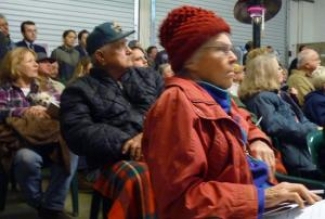 By Miriam Raftery
By Miriam Raftery
January 27, 2013 (Boulevard ) – More than 100 people packed into the fire station in Boulevard, voicing concerns, questions and outrage over plans to transform their rural community into an industrialized energy zone covering thousands of acres. By meeting's end, it was clear that rural residents - buoyed by supporters from major activist and environmental groups in San Diego -- are gearing up for the fight of their lives.
“We need to change the standards in order to protect people,” said Donna Tisdale, who helped organize the meeting hosted by the Protect Our Communities Foundation and Backcountry Against Dumps. “In my opinion, the wind industry actions meet the legal definition of deceit, constructive fraud and fraud.”
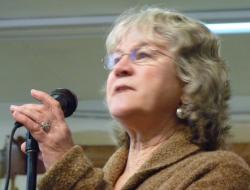 She cited misrepresentations made over noise and electromagnetic frequency (EMF) pollution as two examples.
She cited misrepresentations made over noise and electromagnetic frequency (EMF) pollution as two examples.
Over 800 megawatts (MW) of industrial-scale wind, solar and transmission lines are proposed for Boulevard in San Diego’s East County, as ECM has previously reported. Residents will be surrounded on all sides, if every project is built. Nearby, thousands more megawatts are slated to cover 40,000 acres in Baja, California. That’s an unfair burden on the region, argues Tisdale, who notes that CEQA requires that social justice issues on low-income communities such as Boulevard be considered.
“Where is the equal protection under the California constitution?” she asked.
Tisdale, who also chairs the Boulevard Planning Group, gave a slideshow presentation titled Green energy’s invisible pollution and side effects: the view from inside rural sacrifice zones. (The presentation was originally made January 12 at the Planning and Conservation League’s conference on CEQA at the University of California, Davis.)
Presentations were also made by an expert on negative health impacts of stray voltage, a geologist speaking on groundwater impacts, engineer Jim Pelley whose home is surrounded by wind turbines in Ocotillo, and a retired Cal-Fire Battalion Chief warning of wildfire dangers posed by these big 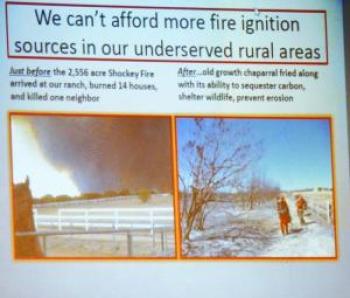 energy projects.
energy projects.
No energy representatives were invited to speak at this event, which aspired to unite citizens in opposition to the projects.
Among the most chilling words came from Mark Ostrander, retired Cal-Fire battalion chief for this region. View a video of his warnings on these dangers and see highlights below.
“Anyone who was around for the Shockey Fire, that was not a high fire danger day. That was a drizzly, cool westerly flow,” he said of the blaze that destroyed 14 homes and killed a Boulevard resident last year. “We saw how fast that traveled through that brush. Now picture that in a Santa Ana. We all remember the 2003 and 2007 fires,” he said, then warned that volunteer fire departments are not prepared to battle blazes that erupt at wind and solar facilities.
“We do not have full-time fire protection out there,” he said, emphasizing that volunteer firefighters are not prepared to battle blazes at the big energy farms. “You’re going to have Hazmat, you’re going to have oil spills. You saw the substation fire in Escondido that burned for two days.”
Firefighters can’t fight fires under wind turbines and airdrops can’t be done above 500-foot tall turbines, since retardant must be dropped 150 to 350 feet above a fire; the higher the drop, the less effective. Solar panels cannot be turned off, meaning water can’t be used due to the electricity.
He said firefighters would have to wait for the fire to burn out of the wind or solar facilities – hundreds, even thousands of acres. ““The bigger the fire, the harder it is to put out,” he emphasized, adding that this region is rated the very highest fire risk severity in the nation.
While residents are forced to pay new fire assessment fees, the big energy companies won’t have to –yet they will be raising fire risk. “That’s gonna 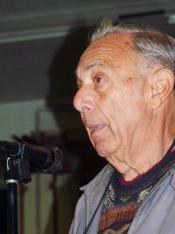 increase your insurance cost too,” Ostrander warned.
increase your insurance cost too,” Ostrander warned.
Dr. Samuel Milham, an epidemiologist and author of Dirty Electricity, gave a presentation titled The Black Side of Green Energy. He shared measurements of dirty energy, also called stray voltage, taken near large wind and industrial solar installations. He admits that when he first heard about wind and solar “I thought oh boy, we’re going to get great, clean green energy.”
But measurements at a 23 Megawatt solar facility with 46 inverters, each the size of a large trailer, found frequencies high enough to cause leukemuia. “It goes away when you turn off the inverters,” he added as proof that the solar inverters were the source of the EMF pollution. While rules require that electricity go to or from a substation on wires, he explained, “now utilities are cheap and lazy, so they dump 80% into the ground. It makes people sick. It makes cows sick.”
Measurements inside the warden’s office at Calipatria state prison from an industrial-scale solar installation were so high that 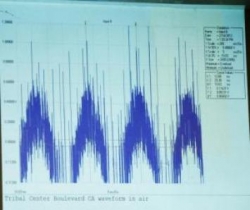 Milham observed, “His office is a living electric chair.”
Milham observed, “His office is a living electric chair.”
Milham also showed charts for measurements he took of stray voltage at the Manzanita Indians’ tribal hall (left) and a horse camp owned by the tribe two miles away. He found extremely high stray voltage levels that he says originated from the Campo tribe’s Kumeyaay wind facility. Now Campo wants to build an even bigger wind facility, Shu’luuk Wind, very close to homes.
He believes there may be a technological fix for problems involving inverterse. Meanwhile, he suggest tribal members avoid walking barefoot at the reservation.
Livestock, pets and wildlife can also be impacted. In one study, he looked at 1700 cows and found that as little as 10 milivolts affected milk production.
What are the impacts on pregnant or nursing human mothers? Nobody knows, because no such study has been done.
Milham also took measurements inside a home owned by Jim Pelley near the new Ocotillo wind facility (right) and found high levels of dirty energy there as well.
For those forced to live near large energy facilities, he suggests buying capacitors such as those made by Stezer electric to reduce levels indoors, though there is no fix he is aware of to help homeowner’s lower voltage levels outdoors on their properties.
An audience member asked Milham what could be done to persuade the Campo tribe and other wind farm owners to eliminate stray voltage.
“You sue their butts off,” Milham retorted. “This whole thing is about corruption. It’s about money. The utilities have big bucks. They’ve got the slickest layers and liars.”
He has done studies in schools with high EMF levels where “the kids go nuts” with attention deficit disorder—a problem that improved once the school was cleaned up and stray voltage removed; urine studies confirmed changes in neurotransmitter levels in the children’s bodies. EMFs can also cause tachycardia (heart palpitations) and other problems. Even residential solar systems can cause EMFs, though the scale and scope of industrial solar and wind slated to surround Boulevard is unprecedented anywhere.
Consumers can purchase a type of AM/FM radio that can pick up dirty electricity at certain frequencies. For details contact sammilham@ac.rr.com or visit www.sammilham.com , a site documenting diseases associated with electricity.
Tisdale advised residents to get levels checked at their homes before any projects are built, establishing a case for legal action if stray voltage levels increase. She also said there are “clean inverters” that require a five-wire system instead of three wires, but “they are more expensive and utilites don’t want to do it.”
She told the audience of resident, “We’re the lab rats.”
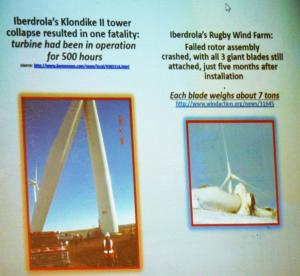 In addition to EMFs, wind turbines pose additional hazards including noise, infrasound and blade flicker. Infrasound, frequencies too low to be heard, can cause headaches, ear pain and pressure, heart problems and more. Some people have been “driven mad” and moved out of their homes at wind farms in many locations around the world, she added.
In addition to EMFs, wind turbines pose additional hazards including noise, infrasound and blade flicker. Infrasound, frequencies too low to be heard, can cause headaches, ear pain and pressure, heart problems and more. Some people have been “driven mad” and moved out of their homes at wind farms in many locations around the world, she added.
There are also safety problems. Tisdale's slideshow included images of Iberdrola turbines that have collapsed, sending the gargantuan turbines weighing many tons crashing to earth. Iberdrola is the developer of the Tule Wind project set to be built in McCain Valley on federal Bureau of Land Management public land near Boulevard--with turbines just 900 feet from campgrounds and lining the only road on both sides.
Other turbines malfunctioned, exploded and caught fire. Turbines also attract lightning -- a common occurrance in this mountainous area. More than 190 wind turbine fires have been documented, included two wildfires in California last summer.
Pelley told his poignant story of retiring to Ocotillo. “I moved out to get away from the city,” he said, adding that he enjoyed watching the stars from his front porch on dark nights in the quiet desert. Now, red lights flash on a nd off all night from close to 100 turbines, each 500 feet tall.
nd off all night from close to 100 turbines, each 500 feet tall.
He rattled off many things wrong with both the project and the process, including thousands of years of cultural history of Native Americans destroyed, along with wildlife habitat and mature vegetation. According to Pelley, it all may be for nothing .
“Wind production is very poor,” said Pelley, who has taken videos almost daily since the project went on line December 5—nearly all showing wind turbines not turning at all. To justify the project in an area with at best marginal wind speeds, Pelley says Pattern Energy used “smoke and mirrors” such as taking three years of wind speed data at testing towers, but submitting just 7,700 hours (less than a year) of that data to the federal government. “WE feel that they cherry picked to get the project,” he concluded.
The developer also told residents and officials that the project would be five miles from Ocotillo. “I have a turbine a half mile from my house,” he said. The developer later clarified that the town is five miles from the center of the 12,400 acre project – a substantial deception.
“Every window I look out, I see turbines,” Pelley said, adding that he now sees flashing lights at night even through closed drapes.
Ocotillo’s project also changed the hydrology of the desert to cause erosion and flooding. “Construction was an absolute nightmare,” he added, citing dust storms, noise and floodlights all night long shining in his windows. When he complained, lights were directed at him even from places where no work was occurring, an action he suspects was malicious. As for dust, over 100 complaints were filed by residents to the Air Pollution Control District, yet project monitors paid for by Pattern never reported any problems.
“Everybody’s turning a blind eye” he said of the $600 million project on public land, subsidized by taxpayers. He also accused the builder of taking water from the aquifer despite pledges that it would not do so.
The wind developer made large donations to a local school, service club and business groups to buy support. Pelley urged Boulevard residents not to fall for arguments that the projects will be built no matter what and that they should take what they can get. He urged all to resist such pressures and stand united against the energy projects.
Pelley urged residents that if the developers do not cancel these projects, to monitor the sites themselves with video recorders and cameras, even cell phone photos. He said such actions in Ocotillo substantially delayed construction, making the project more costly to build. (Indeed, at the American Wind Energy Association conference last week, Ocotillo was cited as an example where “many eyes” on a project on public lands should make the industry rethink such locations and opt for private land instead.)
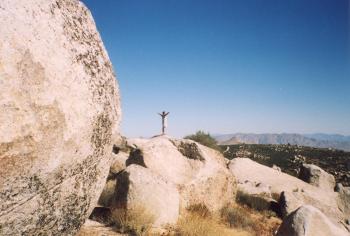 In Boulevard, Tule Wind was approved by the U.S. Bureau of Land Management on federal public land in an inspirational boulder-strewn landscape that is the gateway to three federally designated wilderness areas. Republican Congressman Duncan Hunter and former Democratic Congressman Bob Filner have both opposed the project. The developer, Iberdrola, has said it needs more turbines approved on adjacent state and tribal lands for the project to be viable economically.
In Boulevard, Tule Wind was approved by the U.S. Bureau of Land Management on federal public land in an inspirational boulder-strewn landscape that is the gateway to three federally designated wilderness areas. Republican Congressman Duncan Hunter and former Democratic Congressman Bob Filner have both opposed the project. The developer, Iberdrola, has said it needs more turbines approved on adjacent state and tribal lands for the project to be viable economically.
Shu’luuk Wind is on tribal land under jurisdiction of the Bureau of Indian Affairs. The comment period is now open on the Environmental Impact Statement. Jewel Valley Wind is proposed on private land under county juriscition. There are also numerous large solar projects proposed by a variety of companies, each at least several hundred acres, and some far more.
Tisdale stressed that despite the onslaught, she believes in the “power of the people” to change views of the public and politicians in favor of point-of-use energy production, such as solar on roofs and parking lots in urban areas where most power is used, instead of in rural and scenic areas.
“These are not sustainable,” she said, noting that once mountains are blow up and the land scraped bare, the resources are destroyed forever.
Tisdale also revealed that the Protect Our Communities Foundation which she heads is “ready to file suit against Tule Wind.” She also urged all present to submit comments on the Shu’luuk Wind Environmental Impact Statement by the February 25 deadline. For details on how to submit comments, as well as information on two hearings scheduled on Shu'luuk Wind January 29 and 30, click here.
Chris Noland, a geologist, spoke on the risk such projects pose to groundwater. “All of us up here live on groundwater – it is our lifeblood,” he stated. Blasting to build the projects could cause wells to silt up on neighbors’ properties, he warned. “We’re just surrounded by an enormous industrial attack.”
He noted that in Borrego Springs, over-pumping groundwater has caused the land to subside. The County is weighing a strict new ordinance, but it is too little, too late to restore the water that is lost.
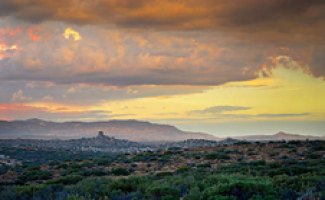 “If you live in McCain Valley, on soft ground portions,” he warned, “that ground can collapse. A number of things can happen when these projects come in, and none of them are good.”
“If you live in McCain Valley, on soft ground portions,” he warned, “that ground can collapse. A number of things can happen when these projects come in, and none of them are good.”
He wants to see the laws changed to stop favoring big companies like SDG&E. “They need to change the guidelines. They’re protecting industry. They’re not protecting us,” he concluded.
Boulevard residents weren’t the only ones in attendance. Concerned citizens in the audience included citizens from San Diego, La Mesa, Jacumba, and other communities alarmed that what is happening to Boulevard could occur elsewhere – and determined to show solidarity with their rural neighbors. They hope to stop the projects and show that companies which seek to abuse rural residents are not welcome in the San Diego region.
Conservatives and liberals customarily divided on most issues are uniting to do battle against the big energy invasion.
Craig Maxwell, a Republican bookstore owner who has run for Mayor in La Mesa, was among those present who is appalled at what’s being done in the name of “green.” Howard Cook, a planning group member from Jacumba, also came to join the fight.
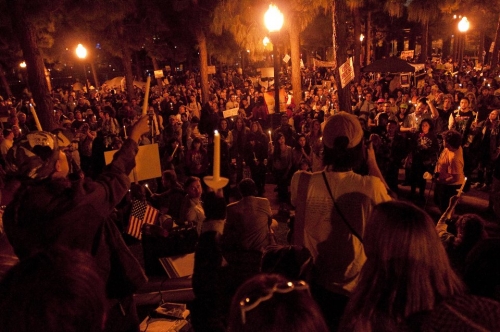 Members of Activist San Diego, a progressive organization, and Occupy San Diego also attended. Both aim to mobilize support for a massive resistance movement against the energy industry takeover of East County. The groups have been key in organization among the largest demonstrations ever in our region. (photo, right, Occupy San Diego)
Members of Activist San Diego, a progressive organization, and Occupy San Diego also attended. Both aim to mobilize support for a massive resistance movement against the energy industry takeover of East County. The groups have been key in organization among the largest demonstrations ever in our region. (photo, right, Occupy San Diego)
Some liken what’s happening to East County to the fracking by gas companies that has polluted communities elsewhere or the coal mining that has blown tops off 500 mountains in Appalachia. Some of the large wind and solar companies are now owned by corporations in the oil and gas industry.
“I’ve spent ten years traveling the U.S. and I’ve seen communities like yours where people’s health is suffering,’ said an Occupy member who rose to speak. She said the “rural sacrifice zone” concept “makes me sick.”
Then she warned those present, “You can’t count on elected officials. Everyone here—you all have to do something. Stand up for your life and your children’s lives,” she urged. Our government is corrupt. It is not left or right. You have to act. Get out there and protest and march! It’s all about money. …They don’t care about you—they’re making you a rural sacrifice zone. Are you going to stand for that?”
The room erupted in applause—demonstrating that once again, East County residents and San Diego neighbors are prepared to band together to save our backcountry communities and public lands.
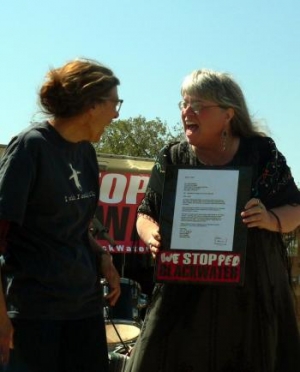 East County is, it should be noted, the place where nearby Potrero, a small town of 824 people, drew global attention to abuses by Blackwater, the world’s most powerful mercenary army. Joining with friends from the Sierra Club, peace groups and others, they staged protests culminating in a march through a threatened federal wilderness nearby that drew global media attention. Townspeople also recalled all five planners who voted for the project, a move led by a local farmer who became the new board chair.
East County is, it should be noted, the place where nearby Potrero, a small town of 824 people, drew global attention to abuses by Blackwater, the world’s most powerful mercenary army. Joining with friends from the Sierra Club, peace groups and others, they staged protests culminating in a march through a threatened federal wilderness nearby that drew global media attention. Townspeople also recalled all five planners who voted for the project, a move led by a local farmer who became the new board chair.
Blackwater ultimately withdrew its plan for a paramilitary training camp here.
Then-Congressman Bob Filner praised citizens' effort to defeat Blackwater as "a textbook example" of people working together to "stand up against a powerful corporation."
Also present at the Boulevard meeting were activists who have helped wage a thus-far successful battle to block the propose Quail Brush gas-fired power plant near Mission Trails Regional Park in San Diego. Energy companies have sought to justify that project as filling power needs when the wind doesn’t blow and the sun doesn’t shine at industrial-scale wind and solar facilities such as those proposed here.
Opponents of Quail Brush forged a powerful coalition including environmental groups, citizens, healthcare representatives, schools, the conservative Mayor of Santee and the liberal Mayor of San Diego.
There are also seasoned litigators among the opposi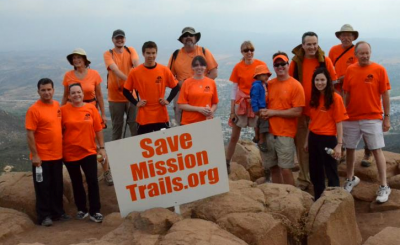 tion to the Boulevard-area projects. Tisdale’s nonprofit groups successfully fought a landfill project proposed by the Campo tribe, which was ultimately dropped in the face of overwhelming community opposition following a ten-year battle that included prolonged legal actions.
tion to the Boulevard-area projects. Tisdale’s nonprofit groups successfully fought a landfill project proposed by the Campo tribe, which was ultimately dropped in the face of overwhelming community opposition following a ten-year battle that included prolonged legal actions.
Occupy San Diego dre w thousands of participants in its marches downtown to protest against big banks, occupied the Civic Center Plaza for months, and shut down the Port of San Diego with its demonstration in support of organized labor.
w thousands of participants in its marches downtown to protest against big banks, occupied the Civic Center Plaza for months, and shut down the Port of San Diego with its demonstration in support of organized labor.
Activist San Diego, led by former labor organizer Martin Eder, is gearing up to launch a new FM radio station within weeks, providing a platform for spreading news of a resistance movement to a broad audience across East County and the San Diego region. Activist San Diego was among groups leading the successful effort to oust Blackwater locally.
Supervisor Dianne Jacob, a Republican who represents East County, cannot speak to specific projects on which she may have to cast a vote. But she has been a strong champion standing up against big energy projects in the past that posed fire hazards and negatively impacted communities, firing 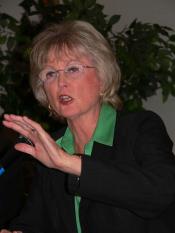 off letters seeking support from officials and testifying before the California Public Utilities Commission on behalf of ratepayers on issues ranging from Sunrise Powerlink. She helped wage a successful fight to persuade the CPUC to reject SDG&E's request to charge ratepayers for the wildfires that the utility's lines caused, among other battles.
off letters seeking support from officials and testifying before the California Public Utilities Commission on behalf of ratepayers on issues ranging from Sunrise Powerlink. She helped wage a successful fight to persuade the CPUC to reject SDG&E's request to charge ratepayers for the wildfires that the utility's lines caused, among other battles.
I’m deeply concerned about the cumulative impacts of big energy projects on public and private lands proposed for the East County area," Jacob told ECM. "When we updated the General Plan, none of this area was designated for industrial purposes but yet unfortunately that is what it’s come to be." She added, "It’s the cumulative impact of all these projects both on public and private land that need to be seriously looked at.”
Jacob said she supports "any efforts to create competition to SDG&E," such as through formation of a local energy cooperative that would buy power from rooftop and parking lot solar -- not projects that destroy the backcountry.
Noting that the courts may ultimately have to decide East County's fate in the face of energy projects on federal and tribal lands over which the county lacks jurisdiction, she added pointedly, "I would encourage those affected to gear up and fight."
Residents out here are not opposed to green energy. Many believe in global warming - but are equally convinced that destroying the environment, threatening the health of residents and habitat for wildlife is anything but green.
If big multi-national energy companies believe that they are going to have an easy time conquering this and other rural East County communities, they would be wise to think again.








Comments
A little good news
If the turbines blades are not spinning then it is somewhat comforting to know because these eagle killers will not be butchering any protected species.